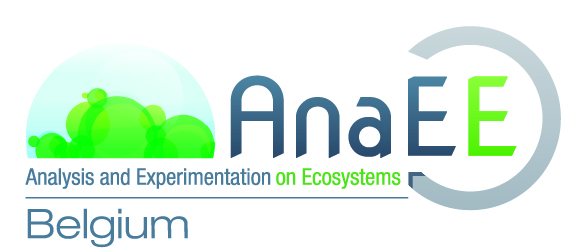Platforms
AnaEE-Belgium features high-level platforms that can experimentally simulate environmental pressures including elevated CO2 levels, climate warming, flooding, biodiversity loss, pollution, and others. A variety of ecosystem types can be hosted, from natural to agricultural, and from terrestrial to aquatic.
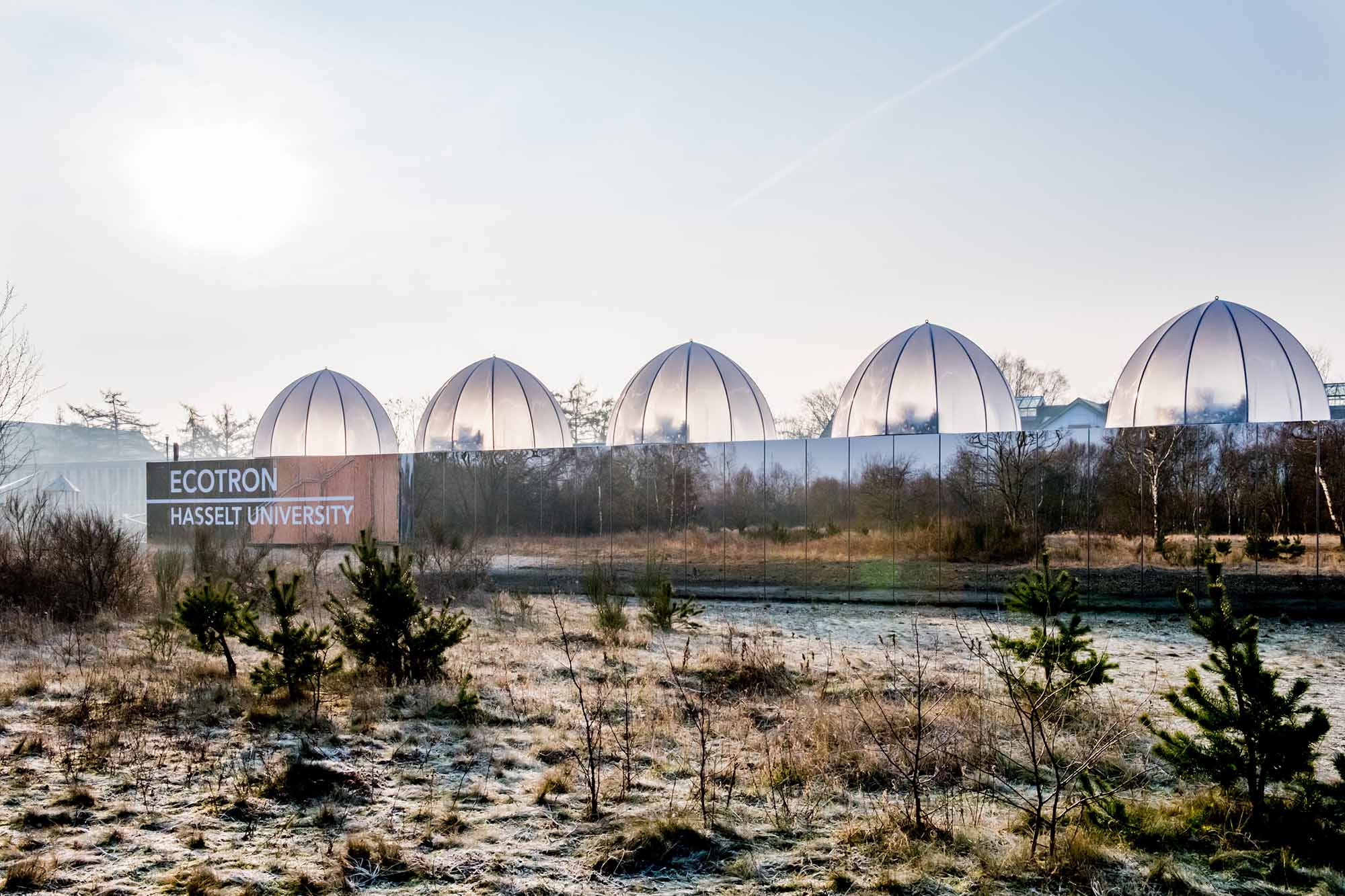
Macro-scale Ecotron (UHasselt, CMK)
Operational since 2018, it features 12 large climate-controlled chambers, each consisting of (i) a sunlit atmospheric compartment (dome) containing the vegetation and (ii) a belowground compartment containing the soil (lysimeter). A wide range of atmosphere and soil parameters can be set and controlled to simulate different environments (CO2 levels, temperature, air humidity, rainfall, wind, etc.), while more are monitored at high time and spatial resolution (e.g. soil water content and composition). At the same time, the system continuously measures the response of the ecosystem to these factors: CO2 exchange with the atmosphere in photosynthesis and respiration, methane exchange, water loss, soil nutrient fluxes, etc. Within AnaEE-Europe, Ecotrons are the most advanced and heavily instrumented facilities for ecosystem studies.
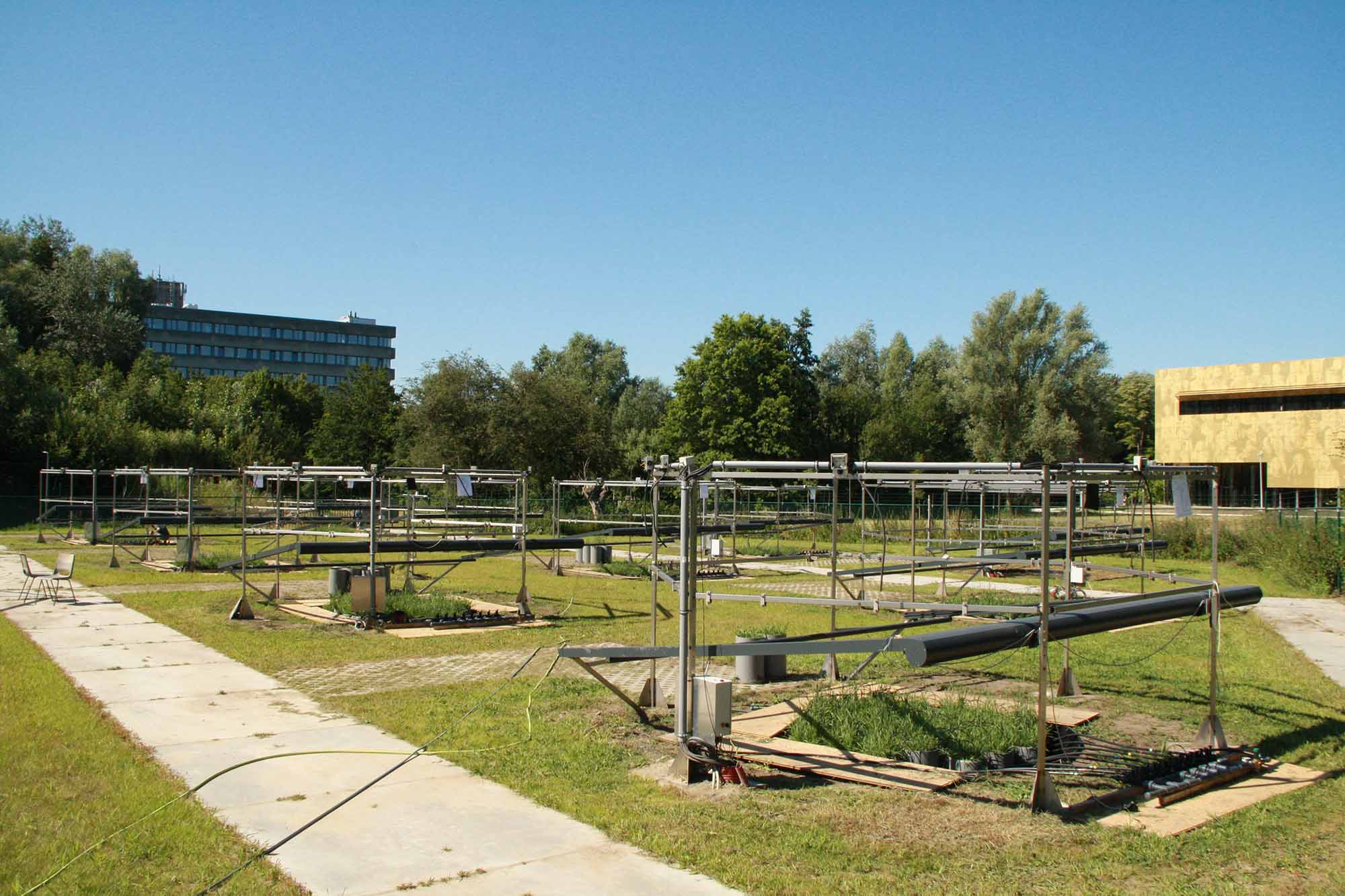
FATI Platform (‘Free-Air Temperature Increase’, UAntwerp, PLECO)
Facility to experimentally simulate the impact on ecosystems of future precipitation regimes, climate-warming and especially climate extremes such as intense droughts and heat waves (e.g. temperatures up to 10 °C above ambient). By using infrared heaters and automated rainout shelters with programmable irrigation, the system can simulate such extreme events in open air, in twelve 7 m² plots, under natural light and wind conditions. It is operational since 2019. The platform is complementary with ecotrons as it tracks fewer ecosystem processes fully automatically, but can host many more experimental units (> 400). This allows for studies with (i) large numbers of levels per experimental factor and many replicates, (ii) multiple interacting factors, (iii) multiple biodiversity levels.
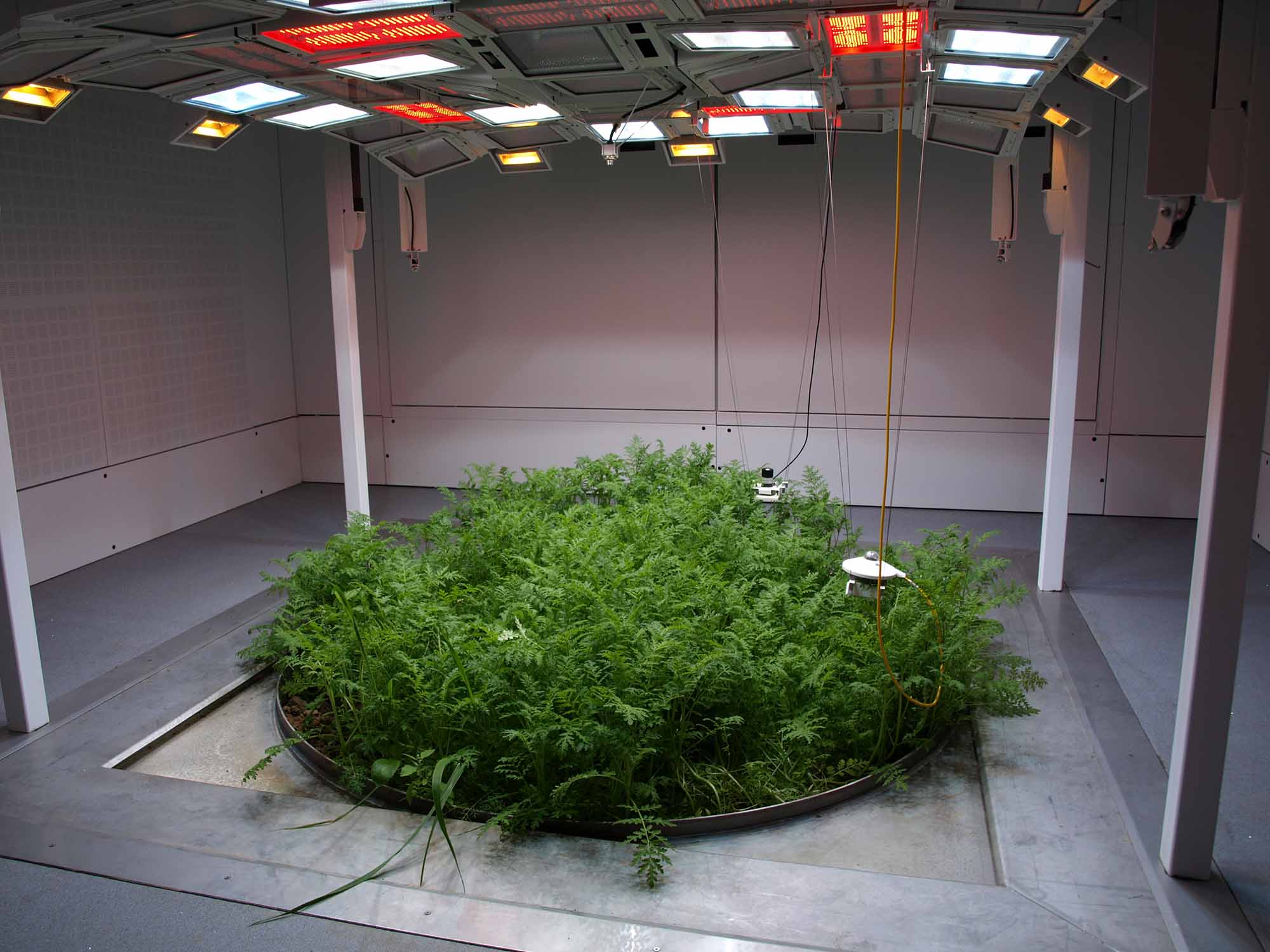
TERRA-Ecotron (ULiège)
This indoor platform focuses on the study of agro-ecosystems and is currently composed of 6 units in which climatic variables (radiation, air temperature and humidity, precipitation, CO2 and O3 concentration) are continuously monitored and controlled. Lysimeters feature a surface area of 2 m² and are 1.5 m deep, with vegetation height limited to 1.5 m. Soil temperature and water potential are conditioned at the bottom of the lysimeter. Gas fluxes (CO2, H2O, N2O, O3) and sensible energy from the ecosystem, soil temperature, water content and matric potential vertical profiles, as well as water leachate amounts are all measured automatically. Leachate water can also be sampled manually for chemical composition (e.g. carbon, pesticides, etc.).
The University of Liège recently acquired €1438300 to extend the TERRA-ECOTRON with new climate-controlled rooms and improved soil instrumentation. This funding was granted by the Walloon Region as part of a Research Equipment-Infrastructure Grant for Technological Platforms of Excellence.
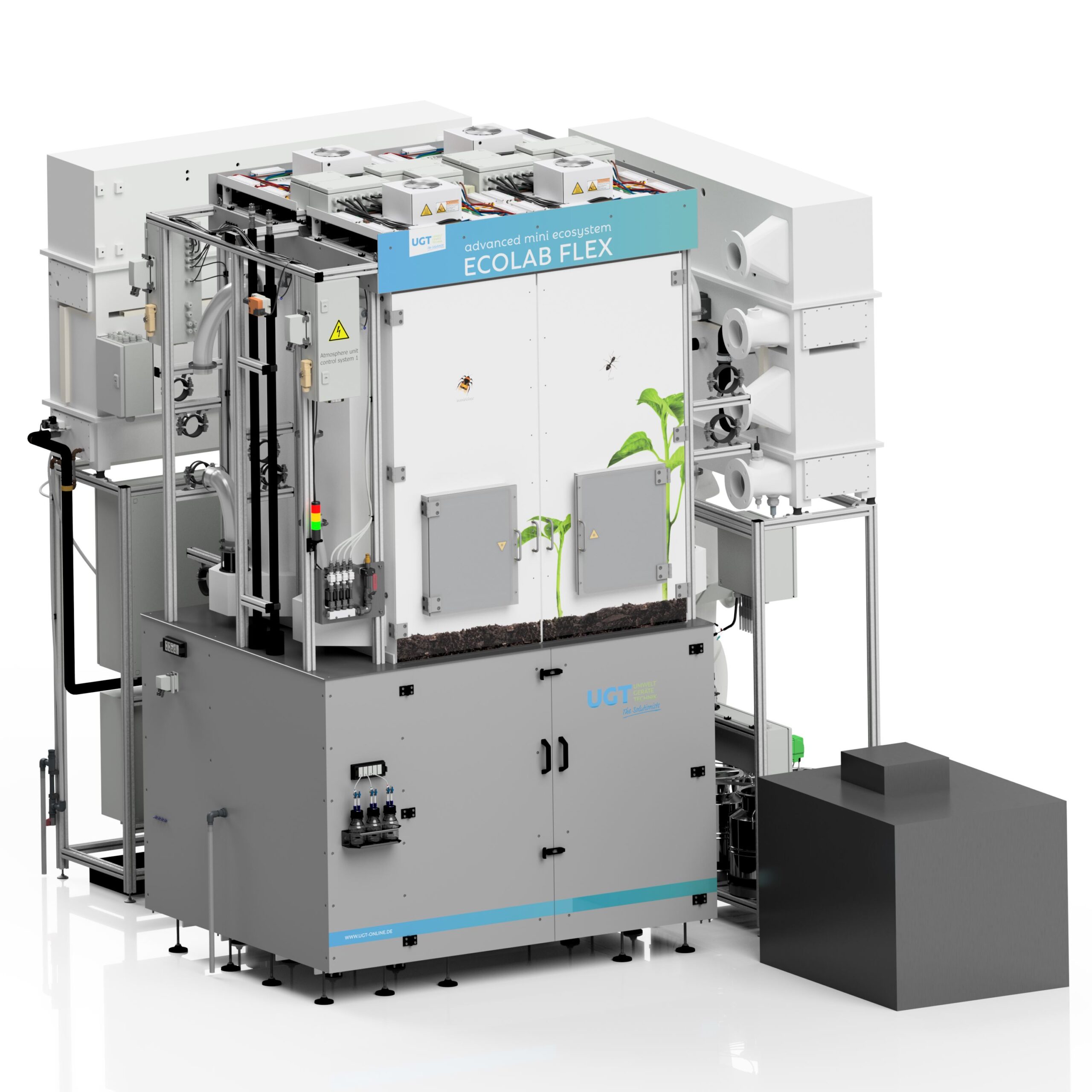
Mobile Ecotron Rapid Assessment Units (ME-RAU, UHasselt, CMK)
ME-RAU is a new cost-efficient set of small ecotrons with mobile lysimeters currently being built. The system encompasses 8 gas-tight climate chambers where users can install either 24 ecosystem mesocosms in lysimeters holding soil cores of 20 cm in diameter, or 8 ecosystem mesocosms in lysimeters holding soil cores of 50 cm in diameter. In either case the lysimeters have depths of 90 cm. This smaller size allows mobile application, the lysimeters could be exchanged between field and ecotrons. Technical characteristics of the climate regulation and sampling of ecosystem functioning data one-to-one resemble the settings of the Macro-scale Ecotron of UHasselt with the only differences being (1) the climate chambers are illuminated with artificial light allowing a year-round experimentation; (2) soil data is sampled at depth 3 locations (10, 30, 60 cm).
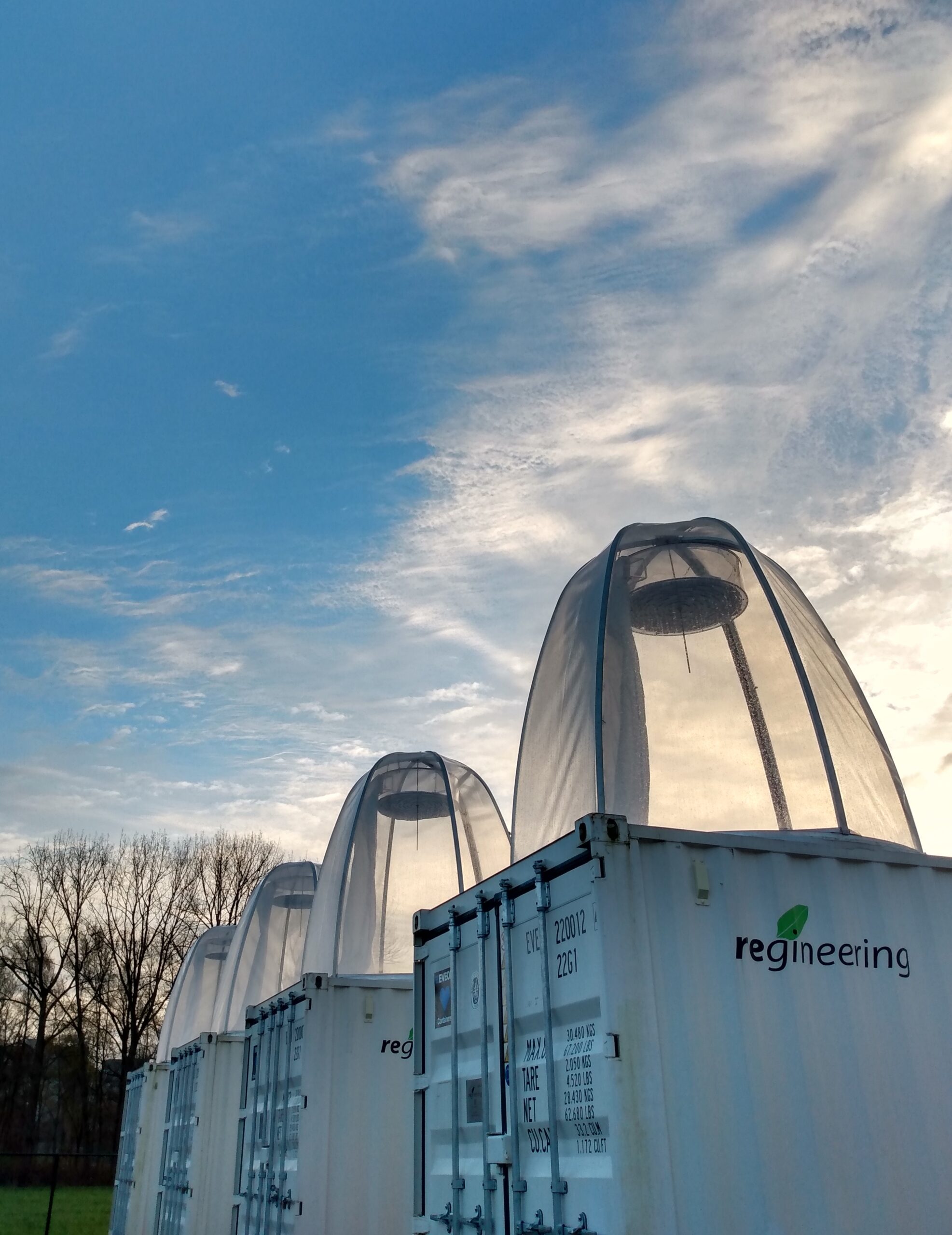
Meso-scale Ecotron (UAntwerp, PLECO)
This Ecotron facility, operational since summer 2022, features 12 medium-sized units for ecosystem monoliths of 1 m² area and 1 m deep. This makes it suitable for grassland and small to medium-sized crops, complementary to the Macro-scale Ecotron. A wide range of current and future climate conditions can be created by changing air and soil temperatures, precipitation and soil water table, air humidity and CO2 level. The highly automated units are likewise equipped to measure ecosystem processes in real-time, including the exchange of water and CO2 . The platform was developed to be flexible: the units are mobile and modular, allowing for potential future expansion with additional units.
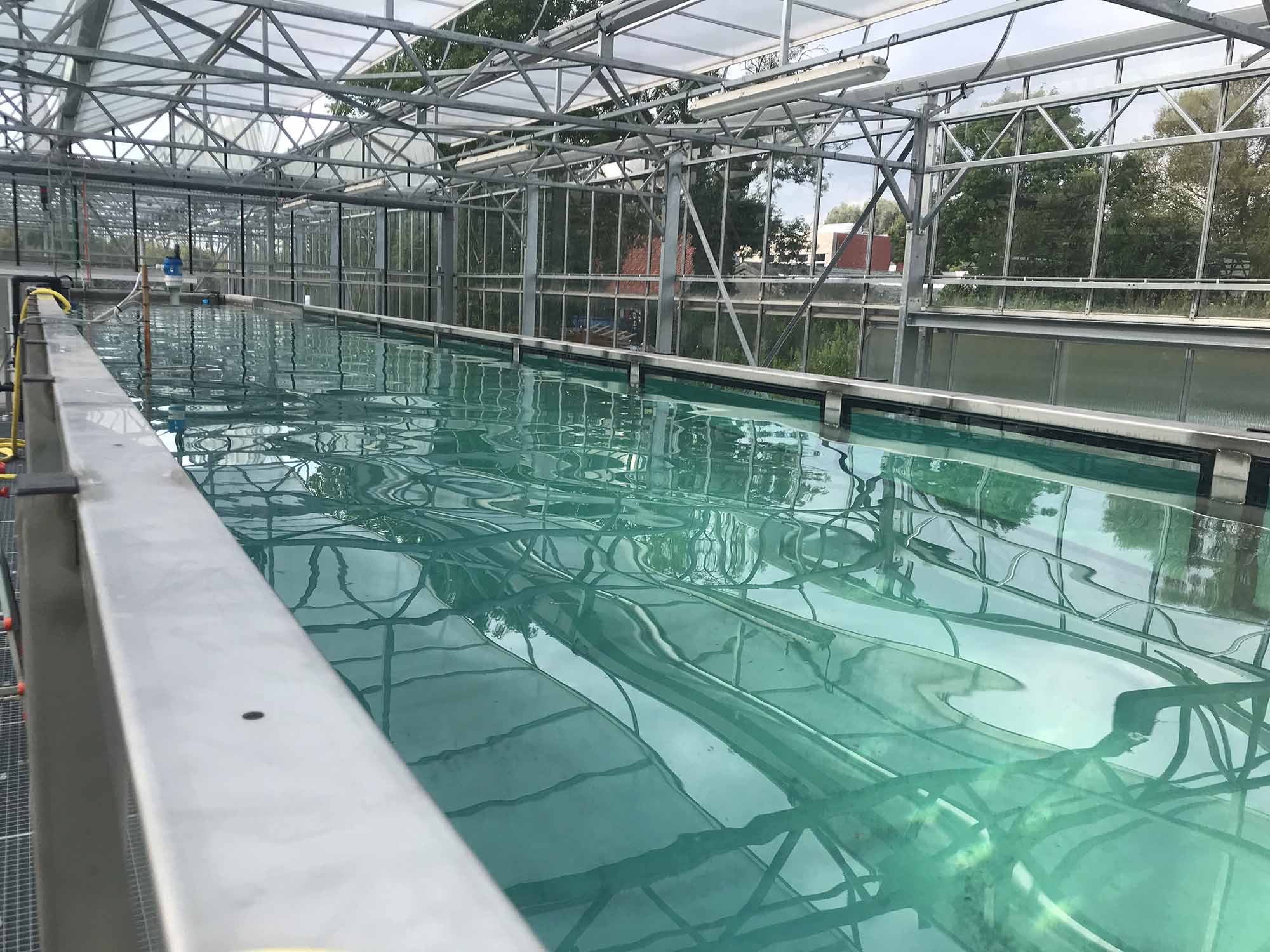
Aquatic Facilities (UAntwerp, ECOSPHERE)
These complement the terrestrial platforms by focusing on aquatic ecosystems, where environmental problems co-occur such as eutrophication, pollution, and flooding. The first subcomponent is a 20 m long, 2 m wide experimental river (Flume, operational since 2020), allowing manipulation of hydrology, water quality (pollutant loads), sediment characteristics and vegetation, to assess interactive effects of future changes in these drivers on river ecosystem functioning. The Flume is built inside and complements the Mesodrome glasshouse infrastructure (operational since 2017), which features 16 Experimental Ponds and 4 smaller Experimental Rivers or Raceways. Here, interactive effects of pollution and future-climate hydrology on linked biotic (fish, invertebrates, vegetation, crayfish) and abiotic (sediment, water) ecosystem parts are examined.
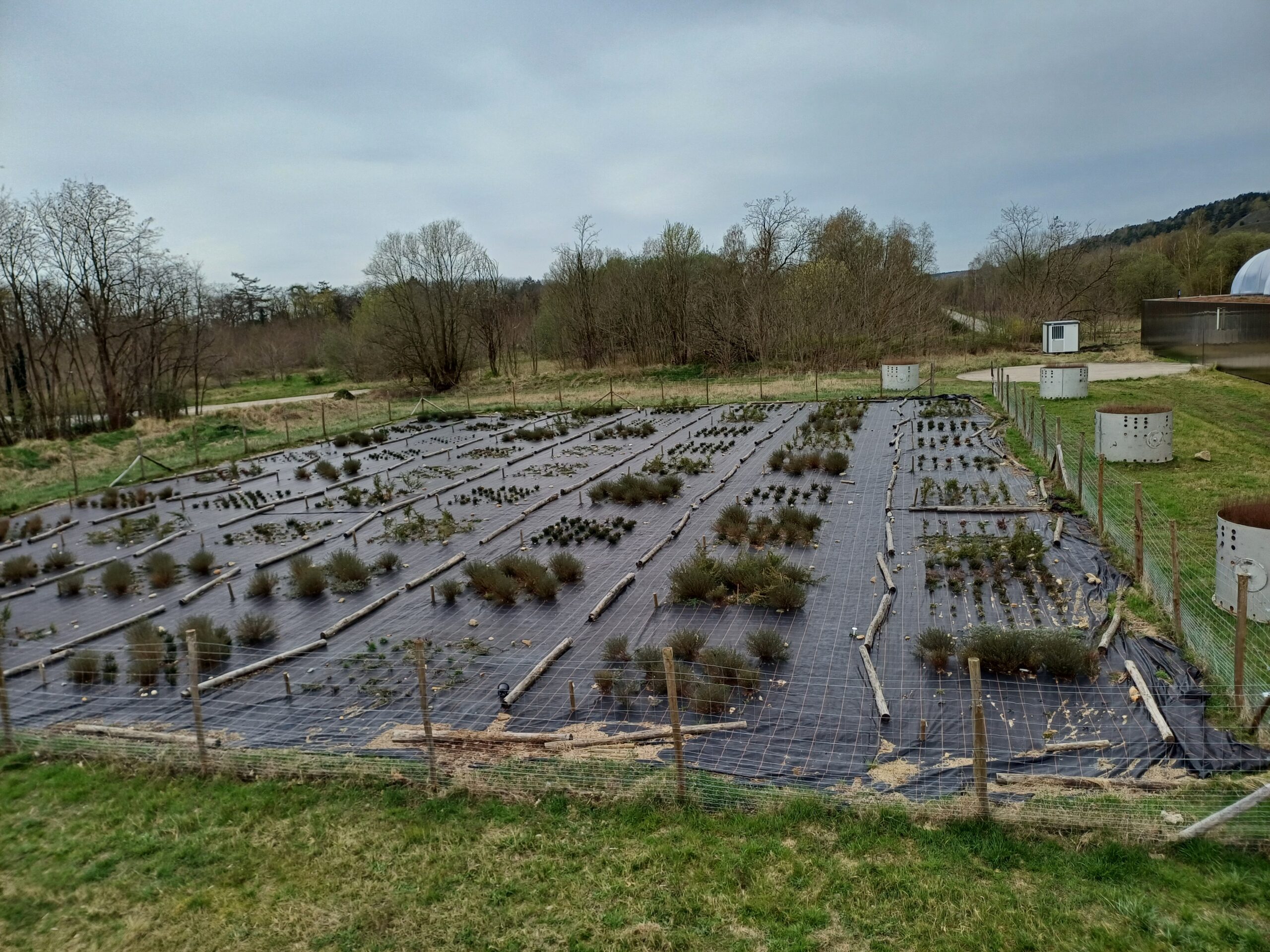
Mycotron, a Soil Lighthouse (UHasselt, CMK)
This Mycotron is a new, long-term field setup established in 2023 to assess impacts of microbial consortia formed by different types of mycorrhiza (plant-fungal symbiosis) on soil health, functions and biodiversity. The Mycotron has 60 2×2 m plots where gradients of mycorrhizal fungal colonisation by arbuscular, ecto-, and ericoid mycorrhizal fungi are created by using combinations of plant species featuring these 3 mycorrhizal types in different proportions: 18 plots of purely arbuscular, purely ecto-, and purely ericoid-mycorrhizal plants (6 of each mycorrhizal type), 36 plots featuring ⅓ x ⅔ mixtures of two mycorrhizal types (6 plots of each mixture), and 6 plots featuring ⅓ x ⅓ x ⅓ mixture of all three types. Plants have maximally similar ecophysiological traits (all evergreen shrubs) and are planted on the same soil, minimising differences in soil microbial communities, and enabling a focus on impacts of mycorrhizas on soil processes.
